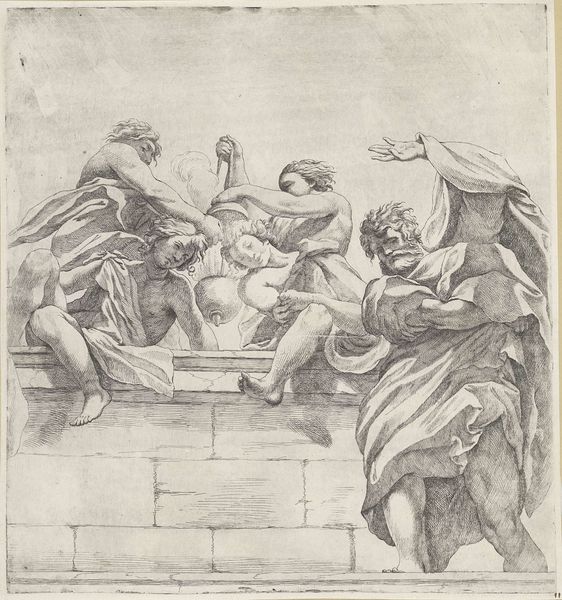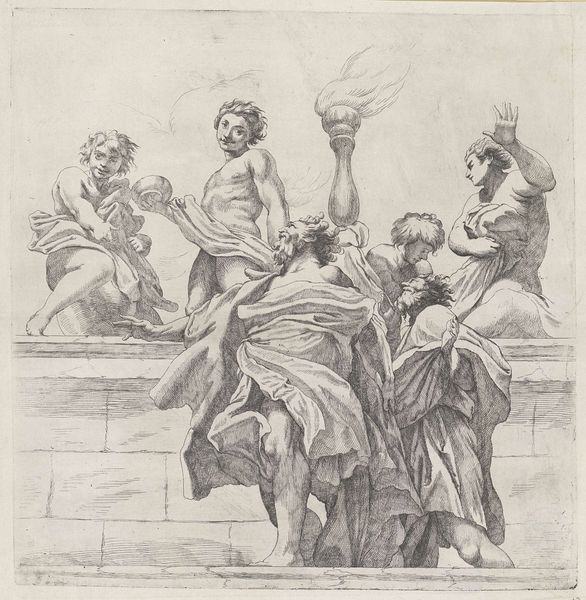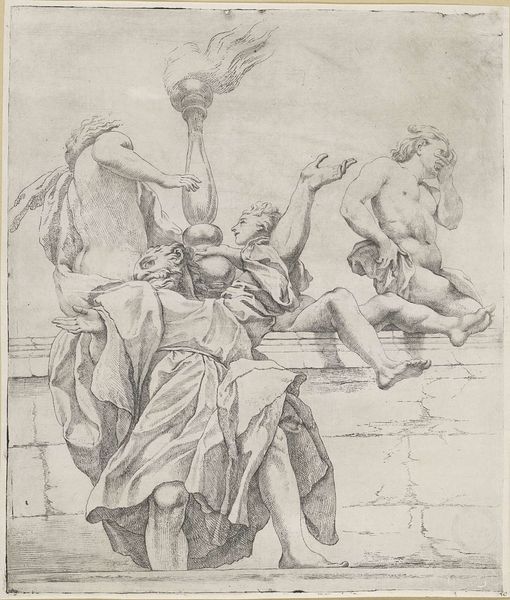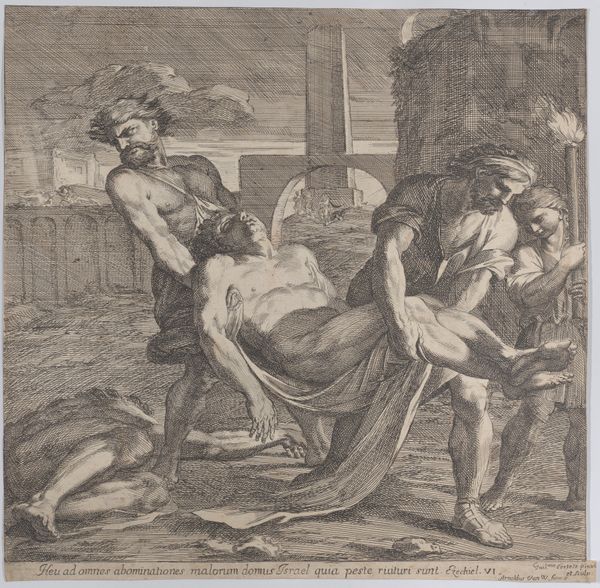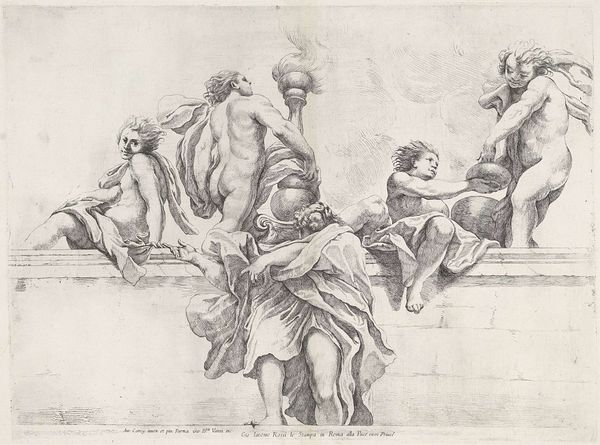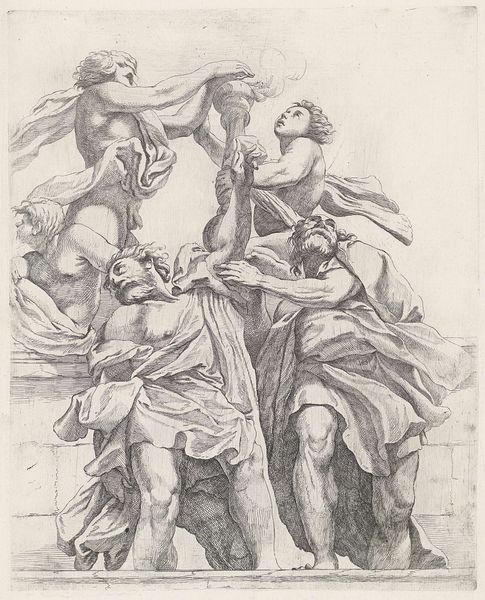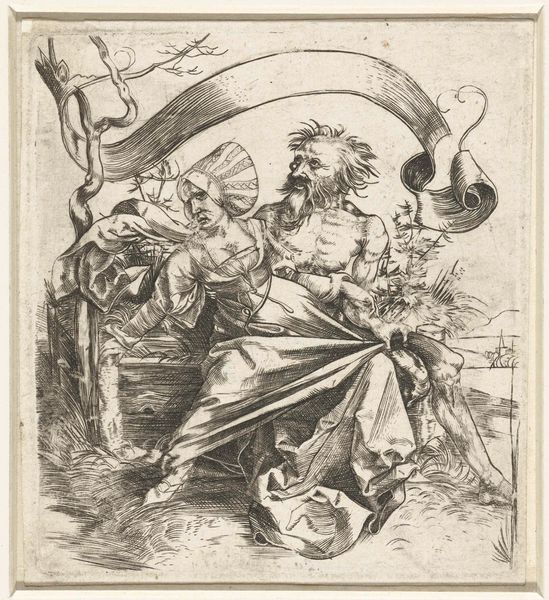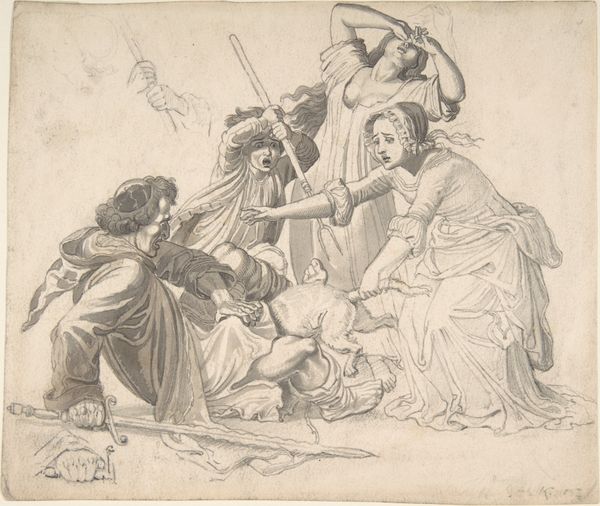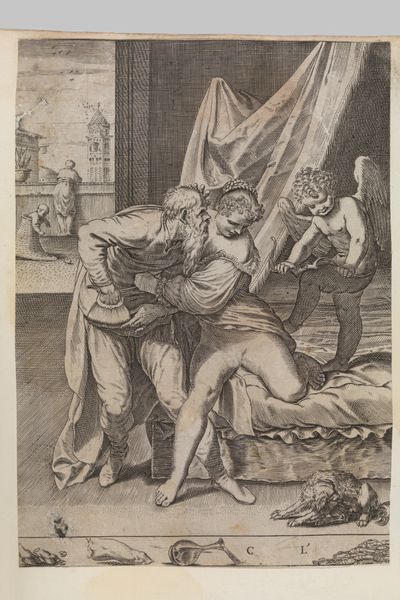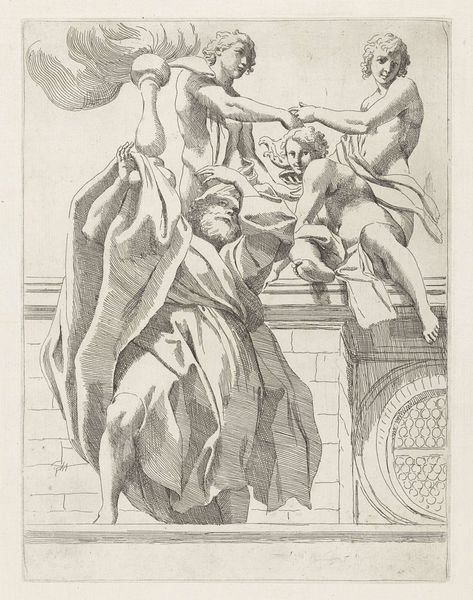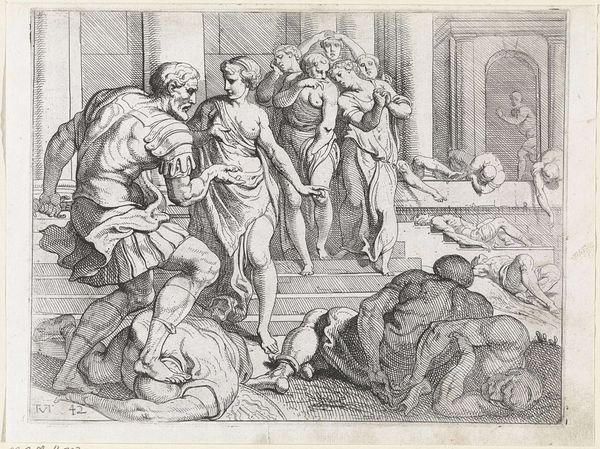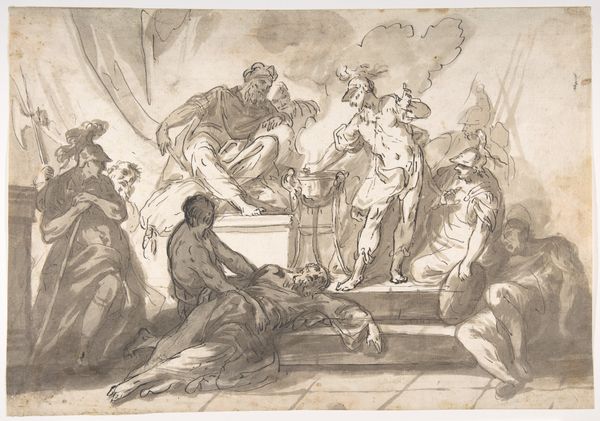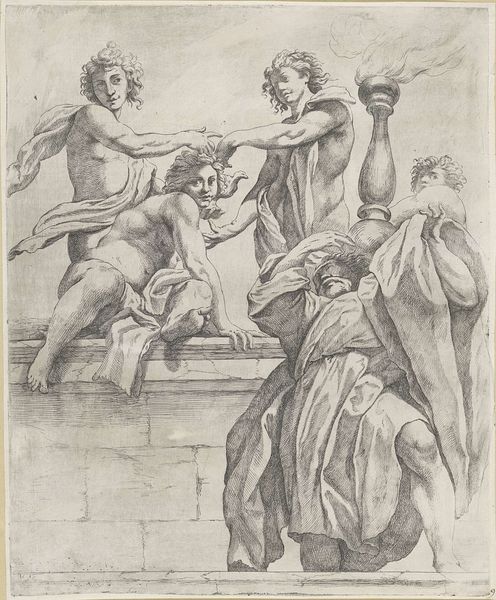
engraving
#
baroque
#
figuration
#
history-painting
#
engraving
Dimensions: height 369 mm, width 370 mm
Copyright: Rijks Museum: Open Domain
Curator: Looking at this engraving titled “Twee apostelen en vijf engelen,” or “Two Apostles and Five Angels,” we can see the hallmarks of Giovanni Battista Vanni’s Baroque style, though the exact dating is imprecise, estimated between 1609 and 1660. Editor: The scene seems to explode from the page! The figures teem, each rendered with a frenzy of lines. Look how densely cross-hatched their drapery is! I wonder what paper and tools Vanni used for this particular print. Curator: That density lends itself to the feeling of dynamic spiritual activity characteristic of the period. The arrangement of apostles and angels around the torch is powerful. That torch is surely meant to be an important emblem of faith. The upward, flame-like movement and implied narrative of this piece reminds me of the Baroque's theatrical sensibility. Editor: I notice a distinct contrast in the treatment of figures. Some are vividly articulated while others seem unfinished. It is interesting how he left it not fully realised, as a tension, which in the era might highlight ideas on work ethic. How might patronage or workshop practices influenced the print's state of completion? Curator: Yes, and consider also that within the symbolism of the Baroque, such apparent 'incompleteness' can gesture to divine mystery that is ultimately beyond human comprehension. The ephemeral figures mirror the intangible quality of religious experience itself, evoking humility as well as an awareness of divine mystery and grandeur. Editor: Thinking materially, the very process of engraving demands planning and skill to transfer from thought to plate to the final print. I imagine the multiple stages, the labour hours involved, each pass with the burin… Curator: Right. What is left to us through cultural memory through these prints? The engravings themselves facilitate wider consumption and dissemination, therefore acting as records of the art world at the time. Editor: Absolutely! Examining art in context illuminates the exchange between making, meanings, distribution, and historical currents. This engraving encapsulates artistic skill and socioeconomic reality. Curator: Exactly! I now leave with a new way of thinking about distribution of imagery as part of the spiritual message. Editor: And I with a greater appreciation for the hands involved in the engraving of that cultural memory.
Comments
No comments
Be the first to comment and join the conversation on the ultimate creative platform.
